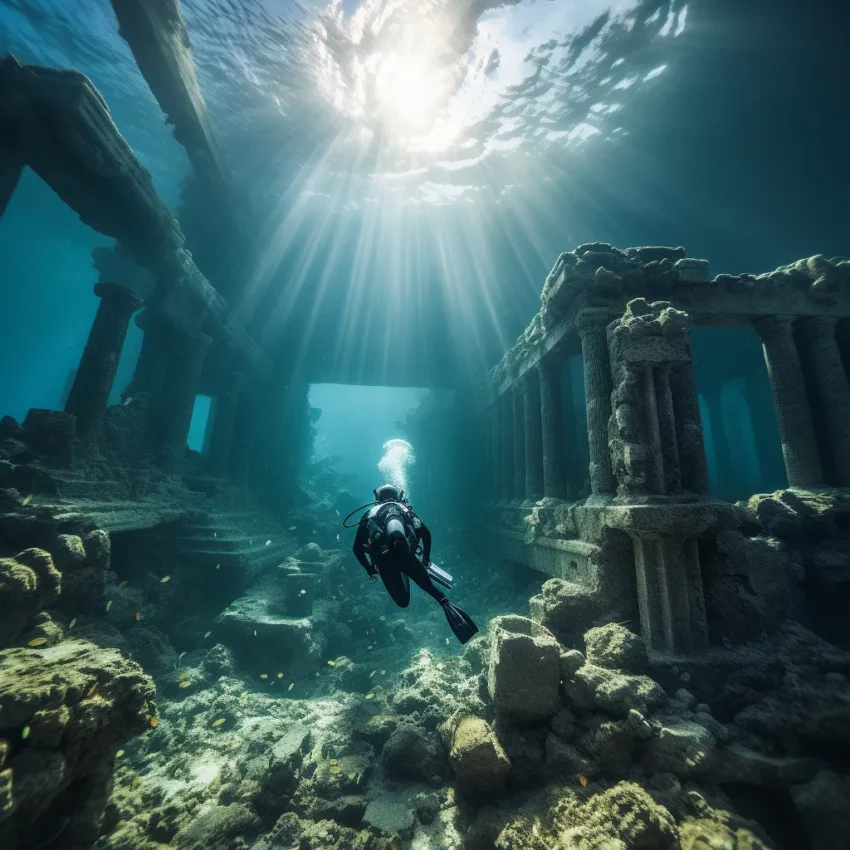The Ancient Submerged City of Pavlopetri: A Window into Prehistoric Urban Planning
Pavlopetri, located in Vatika Bay off the southern coast of Laconia in the Peloponnese, Greece, represents a significant archaeological find as the oldest known submerged city in the world. With its origins tracing back approximately 5,000 years, Pavlopetri offers a unique glimpse into ancient urban planning and civilization.
Get your dose of History via Email
Discovery and Geographic Context
The submerged city of Pavlopetri was discovered in 1967 by Nicholas Flemming and subsequently mapped in 1968 by a team of archaeologists from Cambridge University. Situated between the islet of Pavlopetri and the Pounta coast of Laconia, the site lies northeast of the village on the island of Elafonisos. Historical records, including Thucydides’ “History of the Peloponnesian War,” suggest that Elafonisos was once connected to the Peloponnese, a connection severed by rising sea levels and seismic activity over millennia.
Chronological Development
Initial assessments dated Pavlopetri to the Mycenaean period (1600–1100 BC); however, further studies have pushed the origins of the site back to 3500 BC, encompassing the Final Neolithic Age, Chalcolithic Age, Bronze Age, and middle Minoan periods. The city is believed to have been submerged around 1000 BC due to seismic events, with subsequent earthquakes further altering the landscape. Despite these natural disasters, the city’s layout has remained remarkably preserved, offering insights into the urban planning of ancient civilizations.
Archaeological Investigations
The 2009 fieldwork marked a significant advancement in the exploration of Pavlopetri, employing three-dimensional digital surveying techniques for the first time on a submerged town. This effort revealed at least 15 buildings submerged in 3 to 4 meters of water, covering an area of 9,000 m2. Subsequent excavations have unearthed evidence of a thriving textile industry, as indicated by numerous loom weights, and extensive trade networks, as demonstrated by the discovery of large pitharis pots from Crete.
Environmental and Anthropogenic Threats
Since its discovery, Pavlopetri has faced numerous threats, including sediment displacement by small boats, pollution from large ships in Vatika Bay, and looting. Efforts to preserve the site have included proposals to regulate shipping in the area and the establishment of protective measures such as buoy barriers.
Preservation and Recognition
In response to the growing awareness of the site’s significance and vulnerability, concerted efforts have been made to protect Pavlopetri. These include the organization of World Monument Watch Day and guided underwater tours by professional archaeologists, aimed at educating the public about the site’s importance. Additionally, Pavlopetri is recognized under the UNESCO Convention on the Protection of the Underwater Cultural Heritage, which provides an international legal framework for the preservation of submerged cultural heritage sites.
Cultural Impact
Pavlopetri has captured the imagination of the public and scholars alike, featuring in documentaries and television programs that highlight its historical and archaeological significance. These include the BBC documentary “City Beneath the Waves: Pavlopetri” and episodes of the Science Channel’s “Unearthed” and National Geographic’s “Drain the Oceans.”
In conclusion, Pavlopetri stands as a testament to the ingenuity and resilience of ancient civilizations. Its preservation and study offer invaluable insights into the urban planning, social structure, and economic activities of a world long submerged beneath the waves.
Sources:

